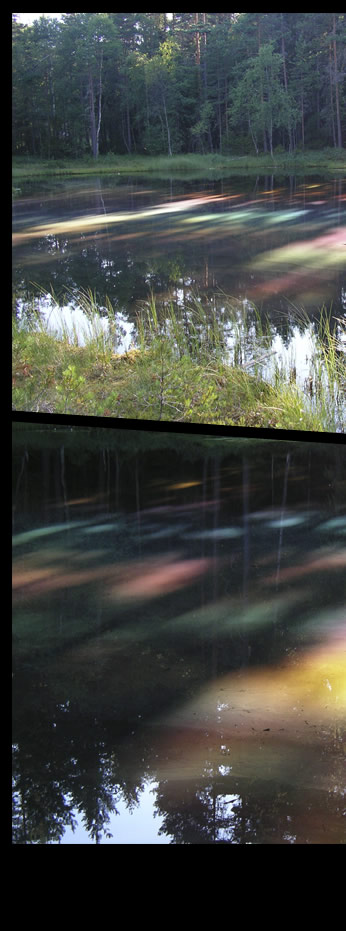Quételet
Colours on a small still pond seen
by Bjørn Revil near Oslo, Norway July 26,
'08. Images ©Bj�rn Revil,
shown with permission.
Still water covered with a thin layer of dust, pollen or algae often
show rings, bands or regions of iridescent colour. Dusty windows show the same effects - don't clean your windows!
Quételet scattering, named after
Adolphe Quételet more known for his statistics and sociology,
is responsible.
The essentialas are small particles near a reflective surface.
The colours come from interference between
two sets of waves.
(1) Waves from light first scattered by a particle
and then reflected by the mirror before entering the eye. (2) Waves
scattered by the particle from light that has first been reflected by
the mirror. Light waves
along the two paths interfere constructively
(brightness) or destructively (darkness) depending on the sun and observation
angles and the light wavelength (colour). A complete Quételet display
is a system of coloured fringes often accompanied by a corona produced
by light scattered directly from the particles.
|





